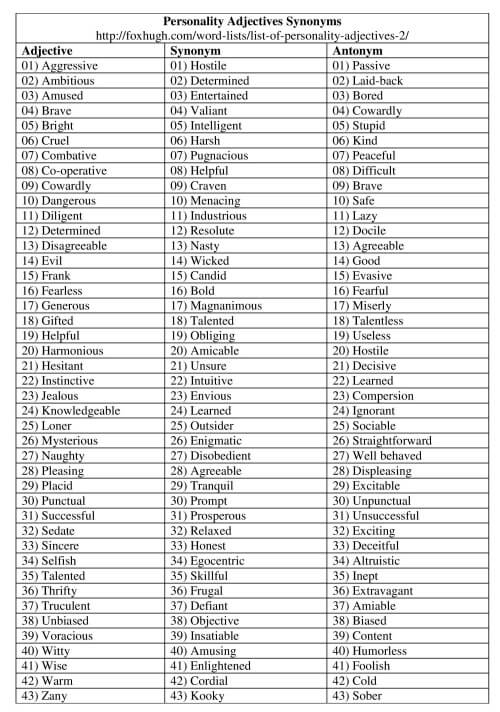To create a strong brand, you need to know who you are and, most importantly, how to communicate that effectively. Identifying your brand personality is one of the keys to doing that well. The more developed your brand personality, the more you can break the wall between your brand and the people you want to connect with. (Identifying your personality is also an important part of your brand strategy. Follow our guide to create a brand strategy if you’re new to this work.)
Of course, when you’re building a brand from scratch or embarking on a rebrand, distilling and articulating who you are can be harder than it seems. This work is necessary, though—and you’re not alone in the wilderness. Over the years, we’ve picked up a few methods to help you hone in on just that.
If you’re struggling to articulate your personality or need to be pointed in the right direction, we can help. Here, you’ll find some of our best tips to identify and articulate your brand personality—with less stress.
But first, let’s talk some basics.

What Is a Brand Personality?
Your brand personality is the essence of who you are. It’s the core traits that you can use to describe your brand. Are you sophisticated and elegant? Fun and playful? Kind and approachable? Defining these traits is key to build a strong visual and verbal identity that communicates who you are through all channels, from your website to your Twitter feed.
What Do You Need to Find Your Brand Personality?
Before you dive in, know that your personality is an extension of your Brand Heart (your purpose, vision, mission, and values). Without an intimate understanding of these core principles, it’s difficult to articulate your brand personality effectively. If you haven’t done this work before, start with our Guide to Find Your Brand Heart (and get your free template below).

How to Find Your Brand Personality
Once you have clarity about why you exist and what you’re trying to do, you can work through these tips.
1) Start with 3-5 adjectives.
These may be all you need to articulate your brand personality, but they can also be a jumping off point to get your team brainstorming. For example:
- Column Five: Human, self-aware, good-natured, and frank; smart but not arrogant; youthful, yet wise.
- Red Cross: Uplifting, empowering, inviting, personal.
- Jet Blue: Nice, smart, fresh, stylish, and witty.
For inspiration, you can reference this helpful list of adjectives from Hugh Fox:

You might also want to solicit suggestions from your team or conduct a quick poll. You can even circulate a larger list of adjectives and ask people to pick five. Once you comb through, you may find that the same words resonated with multiple people. This should help you narrow it down.
2) Imagine your dream spokesperson.
Who would be the perfect face of your brand? Whose essence captures what you’re doing? What characteristics do they have that you want to emulate?
Alternatively, some brands create an actual persona or mascot that captures their personality. Think of Betty Crocker, a fictional housewife created by the Washburn-Crosby Company in 1921, or Mailchimp’s chimp mascot Freddie, who “smiles, winks, and sometimes high-fives” but never talks.
You can also personify your brand in other ways. What would you be if you were a car, a band, or an animal?
For example, you might describe your upscale Vodka brand as a bartender with the charm of Bradley Cooper and the wit of Stephen Colbert, or you might describe your inclusive beauty brand as the lovechild of Lizzo and Jameela Jamil.
3) Create a mood board.
If you’re having trouble describing yourself, sometimes it helps to “see” yourself. Compile images of the type of person or people you want to be. Are you the carefree surfer enjoying a final summer sunset? A gamer with the perfect comeback? Note: This isn’t necessarily meant to represent your visual identity; it’s just meant to help you hone in on your personality.
4) Think of who you want to be to your customers.
Remember who you’re for. Who would your ideal customer turn to for help? A reliable older brother? A cheerful best friend?
What traits would make them choose you over another brand? What do you want them to envision you as? These can steer you in the right direction.
5) Try a quiz.
Sometimes you need a nudge in the right direction. With this Brand Personality Quiz by N-Vision Designs, you can answer 7 simple questions that can help you identify your brand archetype. Note: You don’t have to take this as gospel, but it can be a helpful tool if you’re stuck.
5 Great Brand Personality Examples
Identifying and articulating your brand personality can take time. It’s important to think about it deeply and make sure it is an authentic reflection. (When brands try to be something they’re not, it becomes pretty clear pretty quickly.) If you’re feeling stuck, it can help to look at other brands—and even your competitors—for inspiration of what to do and what not to do. (Pro tip: If you do a full brand audit, you can get a good sense of your competitors’ personalities, which can give you great insight into how you can differentiate from them.)
In the meantime, we’ve rounded up a few examples of brands with great personalities. These brands come from all industries but they all have one thing in common: a strong personality and a consistent brand story.
1) Beauty Bakerie
This bakery-themed cosmetics company has a simple mission: “to be sweet and sweeten the lives of others.” This mission is baked (excuse the pun) into their personality. Sweet, playful, and joyful, you get an instant sense of who they are in everything from their product names to their promo.
What’s sweet and sour at the same time?
Our New Lemon Bar Mini Palette ? pic.twitter.com/dLhvSFfdBz
— beautybakeriemakeup (@beautybakerie) August 7, 2021

2) Zendesk
Zendesk outlines their brand personality in their brand guidelines (which you might want to take a look at just to see what great brand guidelines look like). Their simple, succinct descriptions instantly communicate who they are, and you can see this personality and approach throughout their website and branding assets.


3) LinkedIn
As LinkedIn dictates in their guidelines, “When we write and speak, we want you to feel like we’re your teammate at work, someone you like and trust. Someone who’s always on your side. Someone you can lean on for guidance, encouragement, and expertise. Someone who has a genuine interest in helping you be your best professional self.” Their brand imagery and voice reflects this across all channels.

4) GEICO
Not only does their saucy little Geico Geko embody their brand personality, the brand finds endlessly clever ways to infuse their personality into every aspect of their branding. For example, the Geico Gecko has his own verified Twitter account, full of entertaining musings. You can also check out the brand book to see how they communicate their brand personality.
Here’s hoping your feed is full of happy memories and not embarassing ones! #YearbookPhoto pic.twitter.com/SoCMLpwqDN
— The GEICO Gecko (@TheGEICOGecko) July 29, 2021
5) Armand De Brignac
This high-end champagne maker touts “la vie en or” (a life in gold) as its brand ethos. As such, their brand personality communicates pure elegance. They use sophisticated language like “uncompromising selectivity” and “artisanal craftsmanship,” while their Instagram feed is a highly curated selection of bespoke imagery. (Seriously, it looks like a swanky gallery in itself.)
View this post on Instagram
What to Do Once You’ve Found Your Brand Personality
Having seen these examples and followed these exercises, you should have a stronger sense of your personality. Now comes the most important part; it’s time to distill your personality into a simple description (or a few bullet points).
Remember: The goal of articulating your personality is to provide the context, background, and guidelines people need to represent your brand accurately.
Once you’ve done this effectively, you can work on refining other aspects of your brand and creating the tools to apply it correctly. If you’re ready to move on…
- Complete your brand voice. Make sure you know your brand voice and tone. (Answer these 7 questions to find your brand voice.)
- Build your visual identity. Follow our guide to build a brand identity that communicates your brand effectively.
- Update your style guide. Find out how to build a brand style guide everyone can use.
- Inject your personality into your storytelling. Follow these tips to tell an interesting and engaging brand story.
And if you need help at any stage, holler at us. We’d love to help bring your brand to life.





